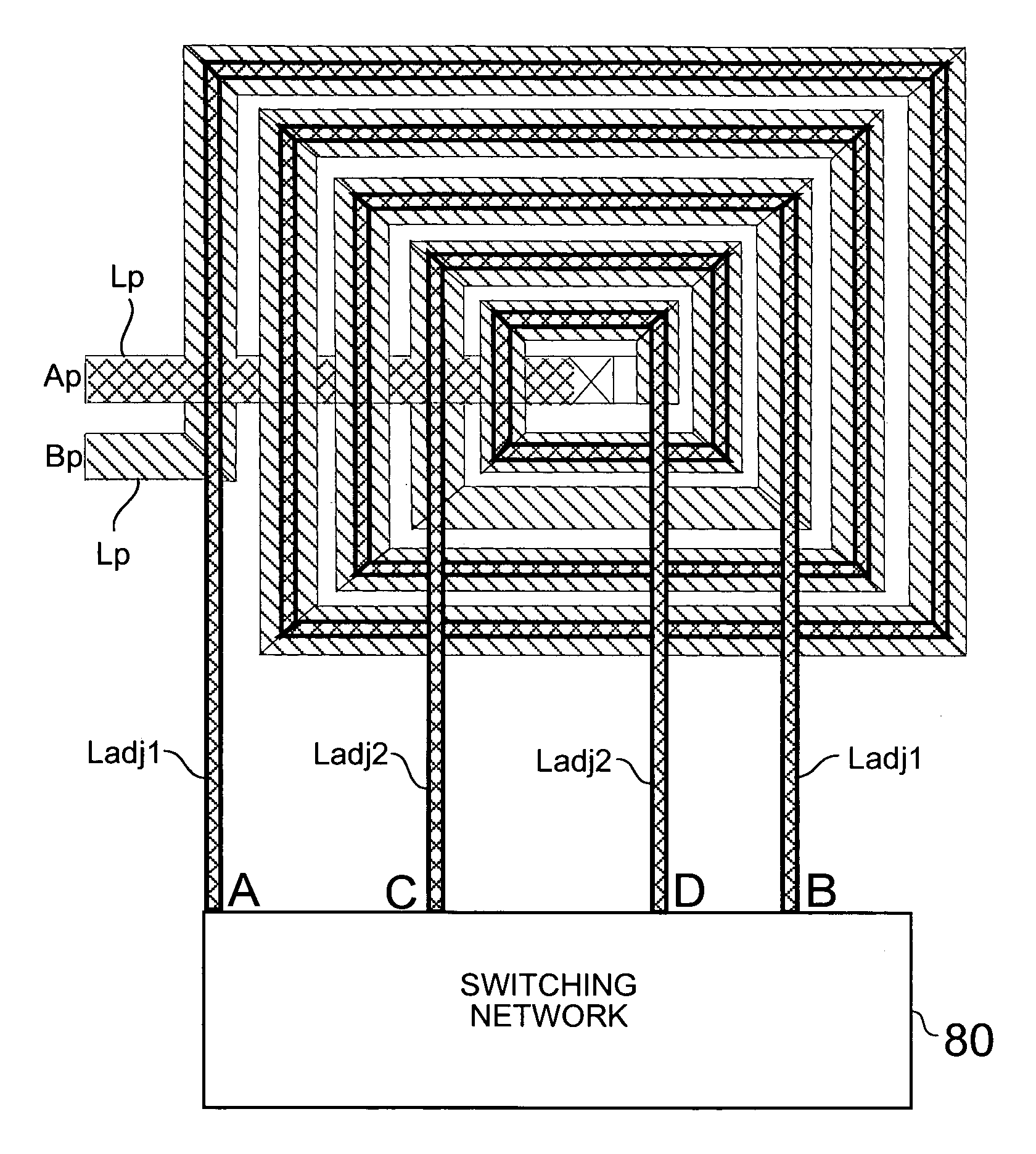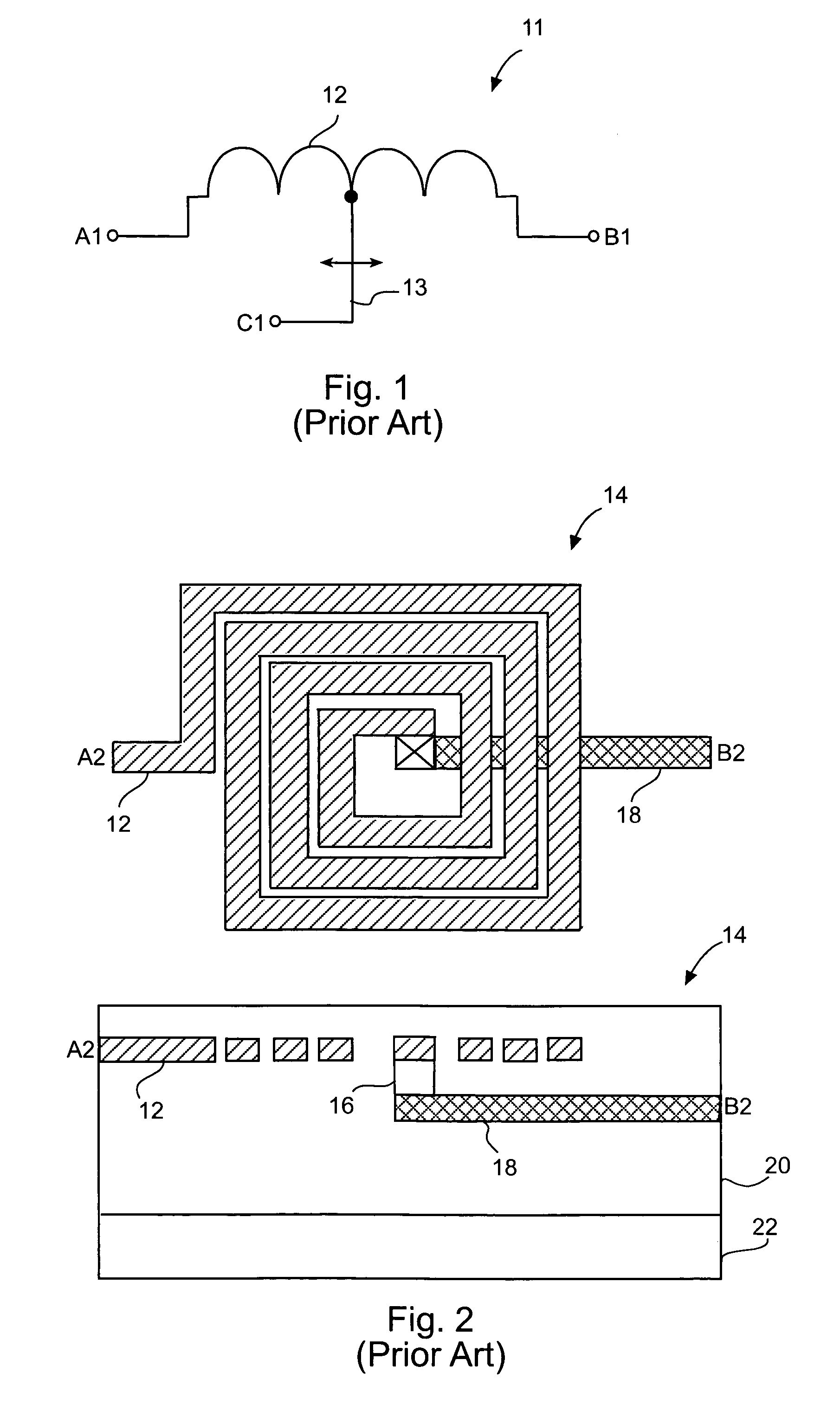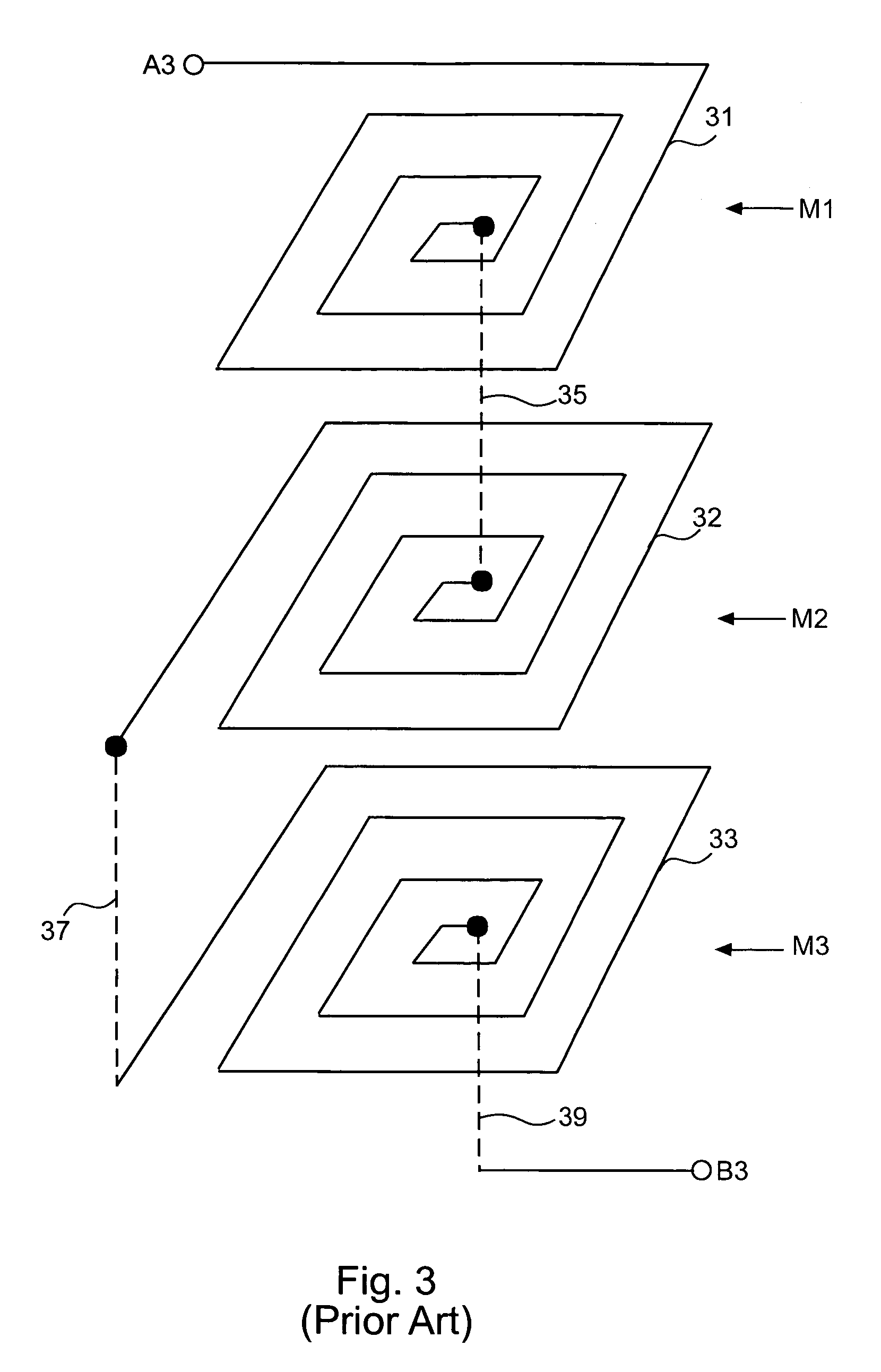Variable inductor technique
a variable inductor and inductor technology, applied in the direction of inductance, impedence network, continuous variable inductance/transformer, etc., can solve the problems of inability to adjust the armature, inability to use integrated circuit technology, and inability to achieve adjustable armatures, so as to reduce the operating point, the inductance of the inductor may be increased or decreased, and eliminate any loading effect
- Summary
- Abstract
- Description
- Claims
- Application Information
AI Technical Summary
Benefits of technology
Problems solved by technology
Method used
Image
Examples
Embodiment Construction
[0027]An initial attempt toward providing an integrated variable inductor might be to construct an integrated inductor with several fixed tapping points and a switching network, but physical limitations would likely make such a configuration impractical with current manufacturing techniques.
[0028]With reference to FIG. 5, such a configuration may consist of an integrated spiral inductor 40 and a first end point A4 on a first process layer, and a multiplexor 42 producing a variable second end point B4 on a second process layer. In the present case, vias V1 through V4 provide four possible tap points at four distinct locations along spiral 40. Thus, one could conceivable tap spiral 40 at any one of the four tap points producing an inductor of varying length by applying an appropriate selection signal to the control input of multiplexor 42. However, the addition of multiple vias as tap points and circuitry for multiplexor 42 introduces a large amount of parasitic capacitive and inducti...
PUM
| Property | Measurement | Unit |
|---|---|---|
| conductive | aaaaa | aaaaa |
| width | aaaaa | aaaaa |
| dielectric | aaaaa | aaaaa |
Abstract
Description
Claims
Application Information
 Login to View More
Login to View More - R&D
- Intellectual Property
- Life Sciences
- Materials
- Tech Scout
- Unparalleled Data Quality
- Higher Quality Content
- 60% Fewer Hallucinations
Browse by: Latest US Patents, China's latest patents, Technical Efficacy Thesaurus, Application Domain, Technology Topic, Popular Technical Reports.
© 2025 PatSnap. All rights reserved.Legal|Privacy policy|Modern Slavery Act Transparency Statement|Sitemap|About US| Contact US: help@patsnap.com



